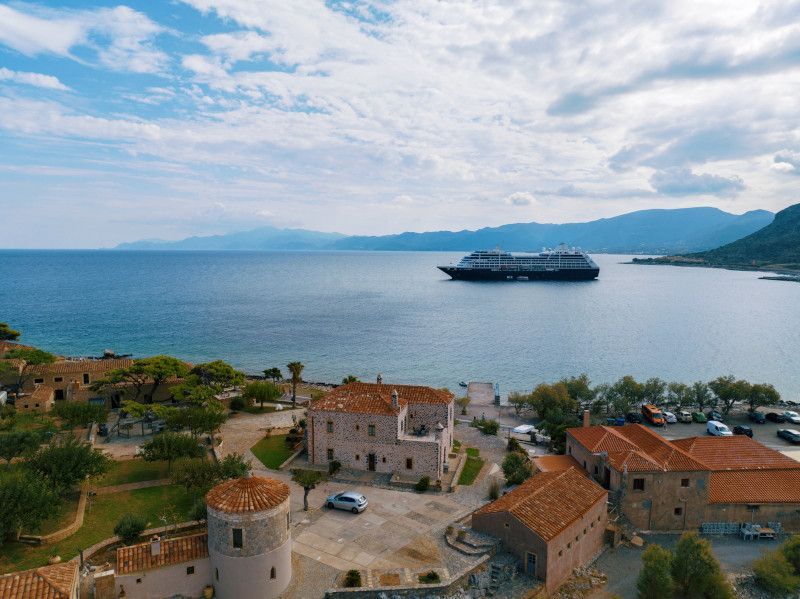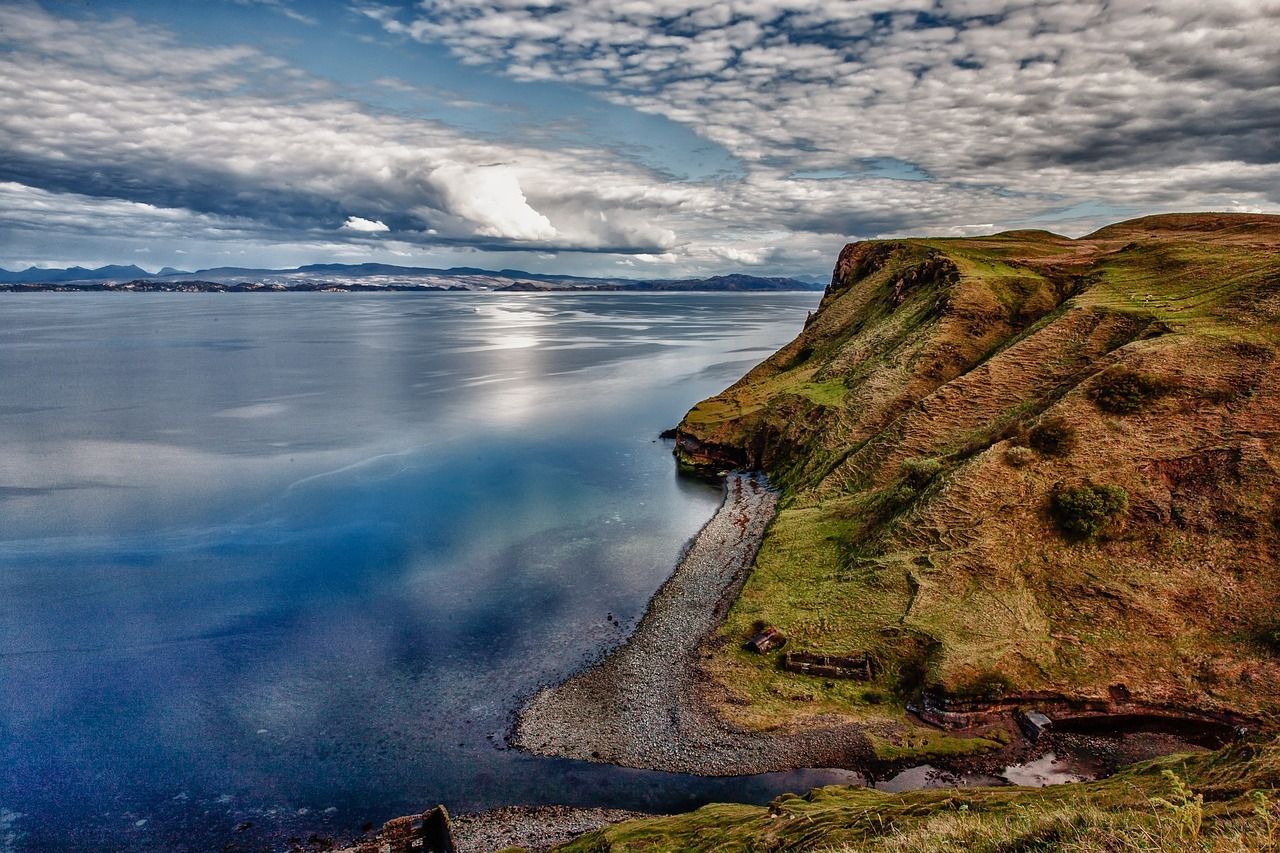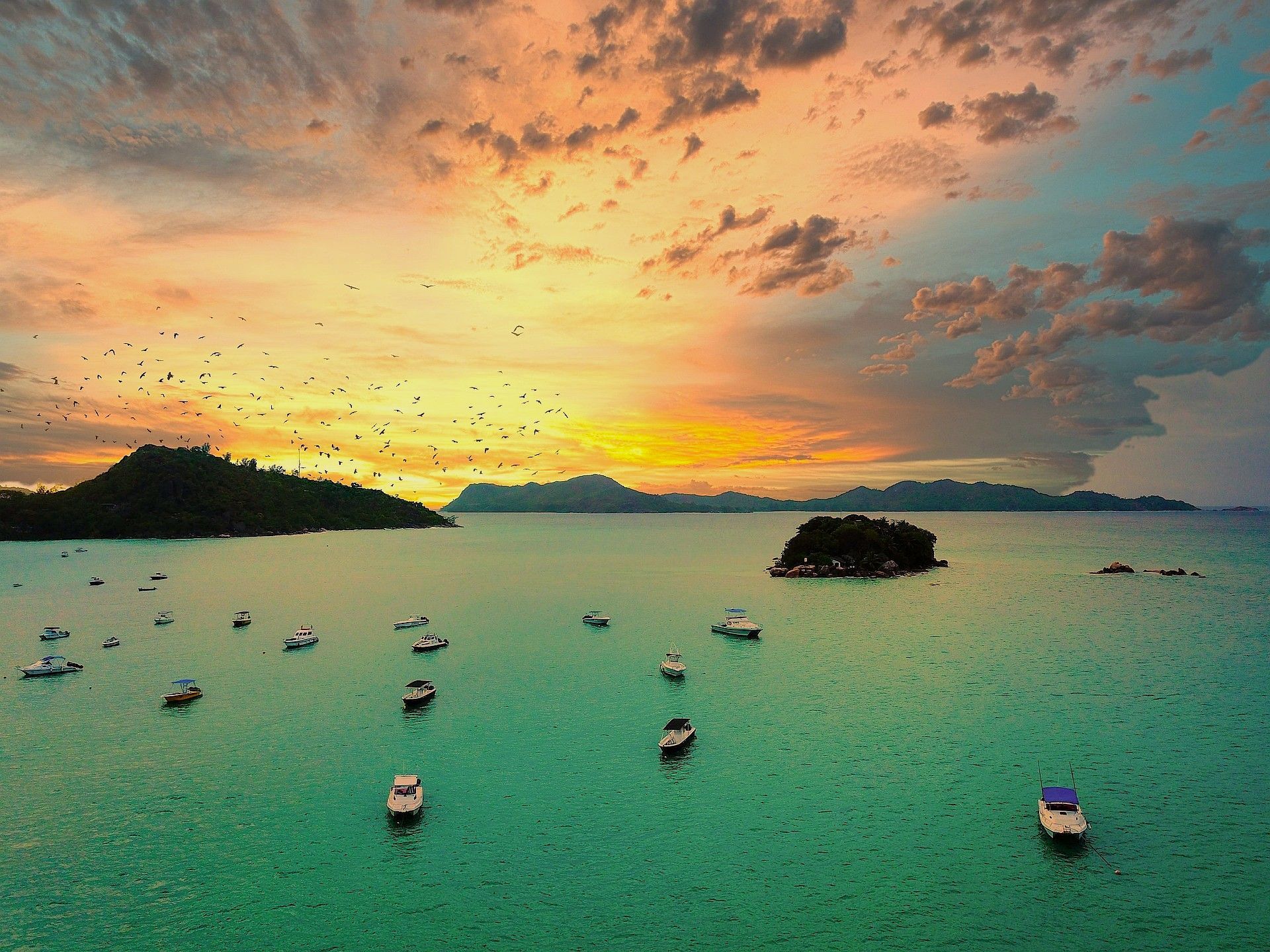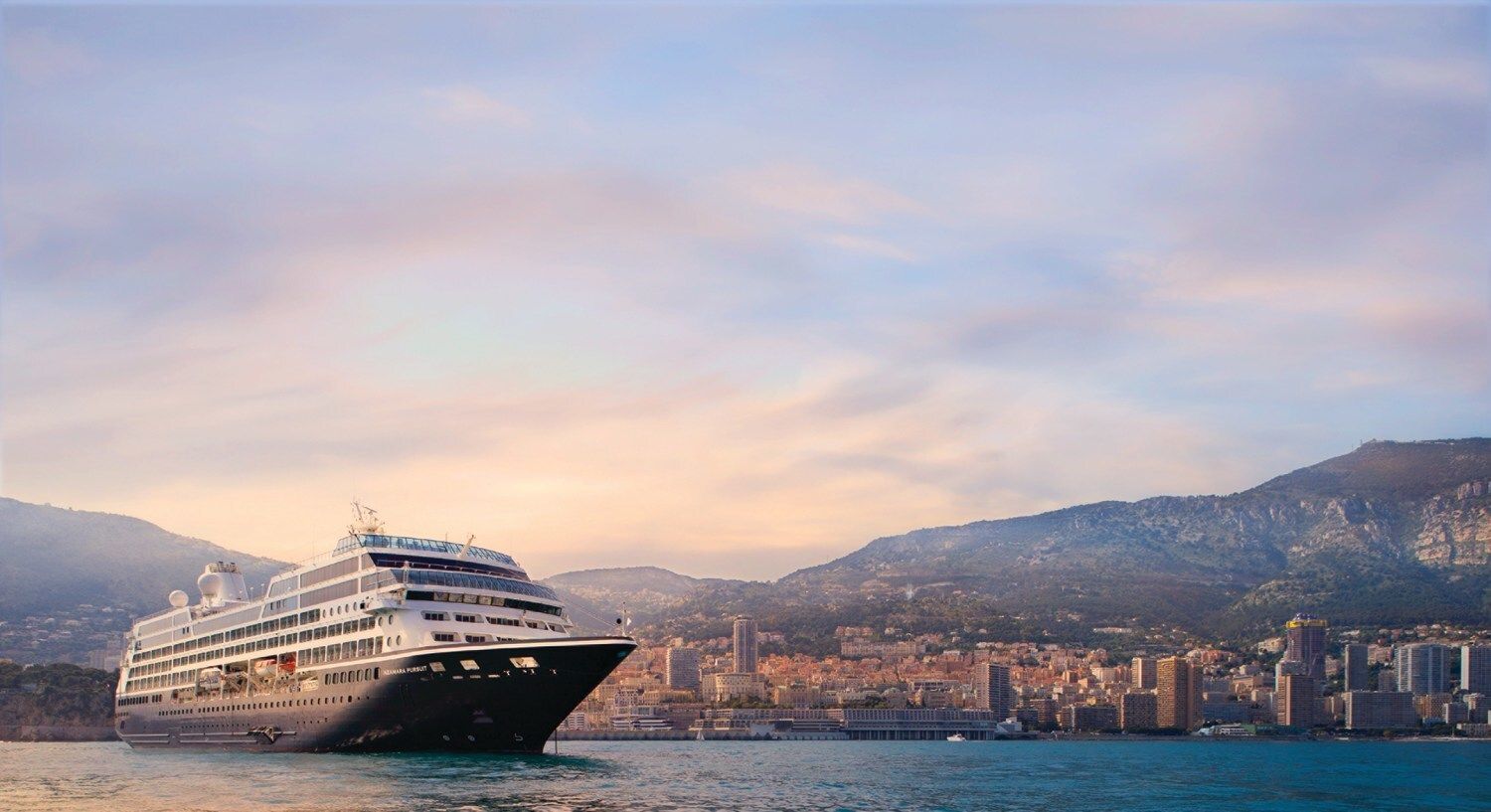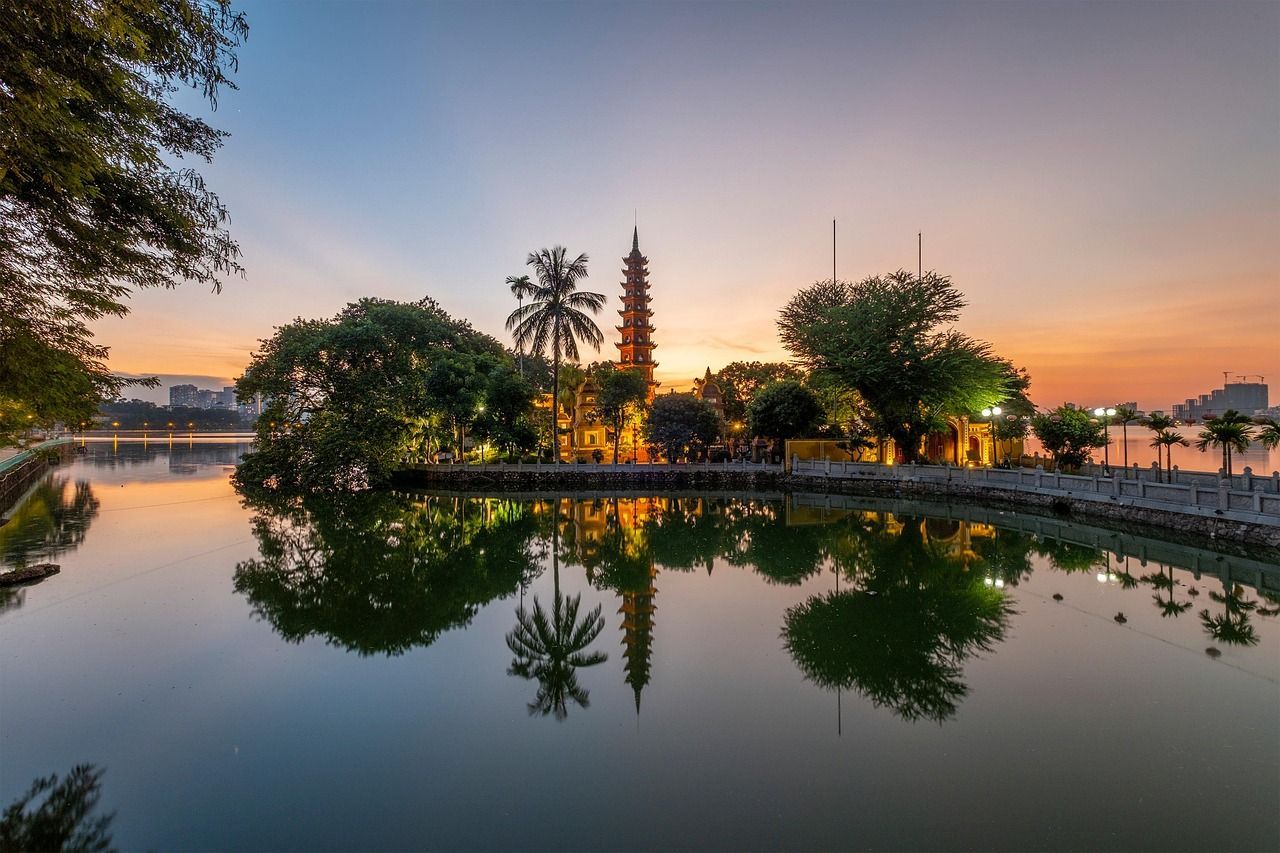DISPELLING CRUISING MYTHS
At Cruise Select, we’re proud to have been leading cruise specialists for 20 years. Between us, we’ve experienced over 70 ships, so it is fair to say that we are passionate about cruising! However, there are many cruising myths abound that often put people off thinking about trying a cruise. Luckily, our CLIA Cruise Master, Amy, is happy to dispel these cruising myths and explain why cruising is an ideal holiday…
TOP CRUISING MYTHS
- Myth1 – Cruising is for the elderly
- Myth 2 – Cruising is too expensive
- Myth 3 – I would be seasick
- Myth 4 – I’ll be stuck at sea with nothing to do
- Myth 5 – Cruising is too stuffy and formal
- Myth 6- Cruising is not good for the environment
‘You’ll never get me on a cruise ship!’ So many people claim (and many of those never will cruise, and that’s their prerogative). Yet over two million people from the UK and Ireland do take an ocean cruise holiday, a landmark which was surpassed two years earlier than predicted! River cruising has also seen growth in popularity, with passengers from the UK and Ireland increasing by over 10%. Perhaps most tellingly, nine out of ten first-time cruisers take another cruise within 12 months!
Personally, I was an early convert at the ripe old age of 9 when I took my first cruise 20 years ago, the same year that Cruise Select was established with my mum, Rachel, as Manager. So let me dispel the most common cruising myths…
‘CRUISING IS FOR THE ELDERLY’
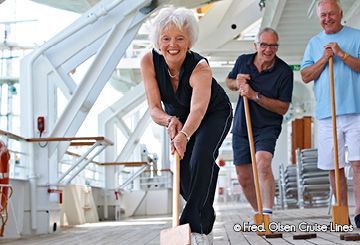
There are many misconceptions about cruising. Over the years, some of these cruising myths have been slowly chipped away; cruising is less likely to be viewed as just for the elderly or the ‘blue-rinse brigade’ as it previously was, largely helped by the growth in family cruising onboard the likes of Norwegian Cruise Line , Royal Caribbean , and MSC, whose mega ships feature more and more family-friendly facilities to keep the whole family entertained and occupied, whether it’s dodgems at sea, a go kart track, rock climbing or incredible almost-gravity defying water slides. Over the last few years, the average UK cruise passenger age has remained largely unchanged at 56/57 , an age below retirement, although internationally the average cruiser is younger still (at only 46, which is the lowest average age for 20 years!).
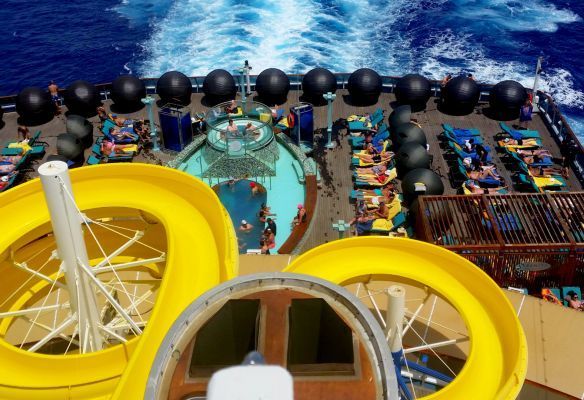
All age groups saw an increase in choosing a cruise , including 8% growth from those aged 30-39, and 3% more twenty-somethings booking a cruise. However, with the time and money, and an increasingly adventurous spirit, those aged over 60 represented the biggest growth in cruise bookings, as they looked to travel ‘widely, comfortably and with purpose’, as CLIA UK put it in their Ocean Cruise Review. Here, we see that not only is cruise resonating across all age ranges , but also our own perceptions of what can be considered ‘elderly’ is changing , with people remaining fitter and more healthy and active for longer than before. The idea of an average or typical cruiser is getting weaker as the amount of choice – in terms of destinations as well as styles of cruising – increases, widening the appeal. Many cruise lines offer experiences to appeal to both young and old, including a balance of excursions that are more active or adventurous with those that are perhaps more sedate or traditional, such as a panoramic coach tour.
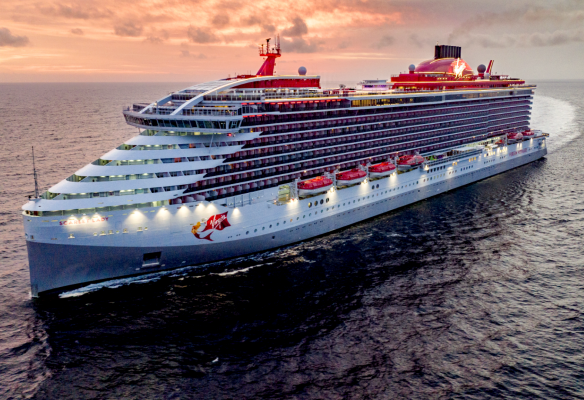
With the advent of Virgin Voyages with their first ship, the Scarlet Lady, it will be interesting to see whether this brand new cruise line will play a part in further changing the demographics or stereotyping of cruising. Virgin already have strong brand-awareness, and their bold plans for adult-only cruising with an unique ‘Virgin twist on everything you’ll see aboard the Scarlet Lady’ will likely be appealing to non-cruisers and to a slightly younger demographic than the current average age for cruisers.
‘CRUISING IS TOO EXPENSIVE’
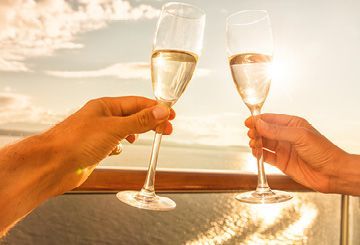
Cruising wasn’t just seen as a preserve of the elderly, it was also considered to be almost exclusively for the wealthy, too. This is perhaps a perception which has been tougher to erase as research has shown that 66% of non-cruisers think that cruising is too expensive. Some of the ticket prices can look a bit dear at first glance, BUT cruising is actually one of the best-value-for-money styles of holiday you could have, as it’s so inclusive.
WHAT’S INCLUDED ON A TYPICAL CRUISE?
As standard on a typical ocean cruise, accommodation, entertainment, full-board dining, visiting many different destinations, and the services of a friendly crew, will all be included . River cruising is perhaps more generous, with drinks typically being included with dinner, and excursions – and even Wi Fi on most river cruise lines.
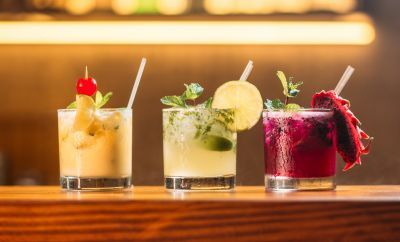
On a per day basis, cruising can often work out a lot cheaper than a land-based holiday ! Some cruise lines are more inclusive – there are several ocean and river cruise lines which throw in all-inclusive drinks, gratuities, some include all excursions, etc – and others offer a great deal of flexibility with prepaid drink and dining packages as optional extras. This means that it’s all paid for before you get onboard , and you can enjoy savings with a package, with the added advantage of not having to worry whilst on holiday about the daunting bar bill at the end. Often, you’ll save even more by booking the bundle in advance, as you may often pay more when buying the same amenities onboard the ship. Bundles can be really personalised to suit your priorities – are you looking to make savings on drinks, gratuities, onboard spend and/or shore excursions? It’s a bit like buying a bundle for satellite TV or a mobile phone – you may be interested in the sports or films packages, but won’t need the documentaries, or maybe you need more data and fewer phone minutes for your phone – similar bundles can often be found for cruising. Luckily, our girls are experts so they can help find the right options for you!
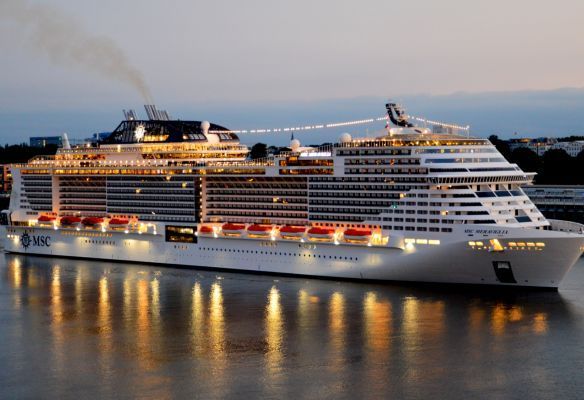
Furthermore, there are so many different cruise lines, there’s a real spectrum out there, that there’s one to fit each budget! Plus, there’s a constant flux of offers and even flash sales to make cruising more affordable, and our girls are on hand to help you find both the perfect cruise and the perfect deal for you. Thanks to our close relationships with a number of cruise lines, we are often able to secure exclusive special pricings on some cruises .
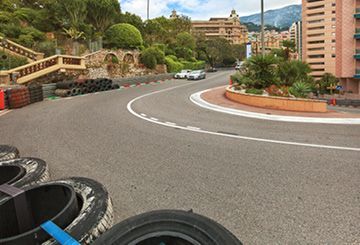
It’s also worth noting that some cruises take in special events, such as the Rio Carnival, New Year’s Eve at Sydney, music festivals, or grand prix, all sorts of events. This sort of feeds into my next point, but you’ll also find that cruising to marquee events can often be better value than a land-based visit on your own . For example, cruising to the Monaco Grand Prix is likely to cost less than the mark-up of a hotel stay combined with restaurant meals during race weekend in Monte Carlo, while show or race tickets are often included in the cruise fare, or sold by the excursion team (often at less of a premium than those offered by land-based ticket sellers), and may also include special cocktail parties, events-themed experts on board, or meet-and-greets with pro athletes and celebrities. So cruising is well worth a thought if there’s an event you’ve always wished to.
‘I WOULD BE SEASICK!’
I have some sympathy with this concern that makes some non-cruisers hesitant to cruise, as I’ve been a sufferer! I’ve been prone to travel sickness on virtually all forms of transportation since a child, although it’s generally eased a lot as I’ve grown older. However, the comparisons non-cruisers make with ferries is unfair and not reflective of a cruise experience, particularly with continuing advances in technology for cruising . There is also an important distinction in a ferry’s purpose as a means of transportation between A and B for shorter distances, and a cruise ship’s purpose as a style of holiday, so comfort is of greater importance and consideration when cruising.
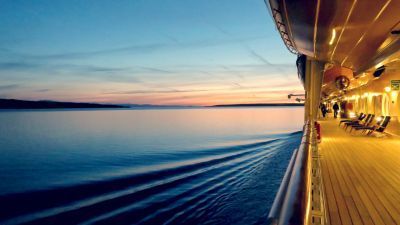
To assume that because you’ve chucked up over the side of a ferry into the English Channel means that you will be seasick on a cruise ship isn’t necessarily going to be a correct assumption!
Furthermore, if you are concerned about passage over notorious stretches of sea (such as the English Channel, Irish Sea, Bay of Biscay or the North Sea), then it is possible to choose alternative itineraries , such as perhaps a fly-cruise rather than a cruise out of the UK, bypassing some dodgy bits of sea. There are also itineraries which hug the coastline, and spend more time at port and less time cruising, which are preferable if you are concerned about seasickness. From my own personal experience, those wristbands which are supposed to prevent seasickness are useless, and – to add insult to injury – are not only hideous, but nigh on impossible to co-ordinate with outfits. During perhaps one of my worst bouts of seasickness (it was so bad, I missed Italian night!!!), I had to have an injection from the ship’s doctor, which sorted it out, but this was a worst case scenario that has only occurred once in my twenty years of cruising. Other than missing out on my beloved carbs once, I’ve never let seasickness prevent me from having a great time on a cruise!
‘I’LL BE STUCK AT SEA WITH NOTHING TO DO!’
Another classic cruising myth. Itineraries vary massively, and days at sea will largely depend on that; for example, cruising from Southampton for a Mediterranean cruise will entail more days at sea than flying straight to Barcelona (or any other embarkation port), and a trans-Atlantic voyage is largely about the journey, rather than the destinations, as ports of call are few and far between. This will be down to personal taste, and for many people, days at sea are a chance to relax and enjoy the ship’s facilities . However, which ever itinerary you pick, you wouldn’t be ‘stuck at sea with nothing to do!’. Put simply – you can do as much or as little as you like ! Nowadays, ships are packed full of activities and onboard facilities, and the bigger the ship, the more choices you have. Some ships have become almost a destination in their own right!
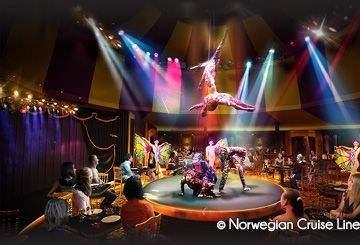
Many ships nowadays boast ‘West End’ style shows, and enrichment programmes, so you can learn new skills, like learning to dance, join a cookery class, or attend a guest lecture by renowned experts in their field. You can, of course, relax as much as you like, by the pool, in the library, at the spa, or in the bar, with many ships offering all of these.

Some cruises may have a theme – such as a wine theme or a focus on a period of history, and they’ll have experts in these fields on board to present lectures, and specially themed excursions. You’ll find a lot of theme cruises on river ships in particular. There’s also lots of destination-rich itineraries on offer, and cruise lines are looking more and more at immersing their guests in the local destinations, whether it’s with a longer stay in port, or a wider range of interesting excursions on offer. Either way, you’ll find that there’s plenty to do on a cruise!

CRUISING IS TOO STUFFY AND FORMAL
This cruising myth may well be related in part to the perceptions of cruising being exclusively for the wealthy and/or elderly, but – like those myths – it is not reflective of the reality of cruising .
Traditionally, cruise ships had quite strict dress codes, particularly for formal night, and there were set dining times, at a set table, where you’d sit each night . There were advantages to this; the same waiter would serve you daily and get to know you (and, more importantly, your likes and dislikes), and this could be quite congenial as if you were sociable enough, you’d even get to know the people sitting near you .
Richard Branson himself said that Virgin Voyages would ‘throw out the traditional cruise dining rule book’ and get rid of the ‘stuffy formalities.’ Although Branson, who has never gone on a cruise before, does not seem to realise that this so-called cruise rule book has already long been thrown out by cruise lines, as nowadays, things have changed! Cruise lines have already been moving away from the ‘stuffy formalities’ and cruising has become a lot more flexible as cruising has become more popular, and there’s cruise lines to cater for those who prefer a more relaxed and informal experience, and others that still adhere a bit more to the old traditions .
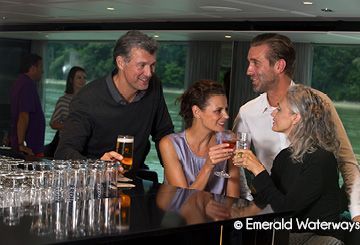
Dress codes have loosened quite a lot , with some cruise lines opting for a ‘country club’ atmosphere, and formal night as an option only . Some have even completely abolished formal nights! Dining has also become more open – partly because ships nowadays have a number of different dining venues on offer, so it’s become less set and rigid, and even in the main restaurant onboard, you might find ‘open dining’ rather than set dining times and places, allowing people greater flexibility . River and expedition cruising are becoming increasingly popular too, and these both offer more relaxed atmospheres onboard; expedition cruising in particular couldn’t be accused of being stuffy and formal!
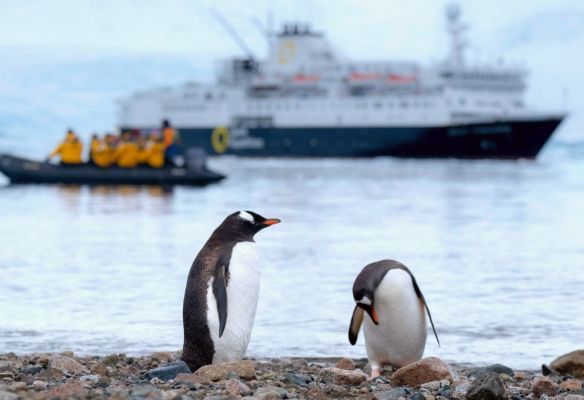
That said, there are still cruise lines that offer set dining, as well as keeping the tradition of formal night alive . For some cruisers, the chance to dress up remains a highlight, and I’m personally quite happy to overdress than underdress . But cruising is no longer as stuffy and formal as once it might have been . I honestly think that this particular preconception from people who have never cruised in their lives is one of my pet hates.
‘CRUISING IS BAD FOR THE ENVIRONMENT, AND NOT SAFE!’
It’s only right that people are paying more attention to environmental issues, and as individuals should be looking at how they can mitigate the impact they have on the planet, so are cruise lines. CLIA (the Cruise Lines International Association) announced that the global cruise industry was committed to reduce the rate of carbon emissions by 40% across the industry fleet by 2030 . This commitment is unique across the whole maritime industry, and showcases the seriousness in which cruising is taking environmental sustainability. (By way of comparison, the aviation industry aims to halve emissions by 2050.)
For cruise lines, the issues of sustainability and climate change are as significant as they are for individuals; after all, cruising relies heavily on the beauty of the oceans and seas , and the preservation of harbours and seaside communities. Furthermore, cruising has always adapted to guests’ needs and demands , and with guests becoming more concerned about sustainability and any impact on the environment, cruising has to adapt for those concerns, too; not least when 36% of respondents for ABTA’s 2019 Travel Trends Report said they would choose one travel business over another if they have a better environmental record (just five years ago, less than a quarter of respondents, or 23%, felt so strongly). As an industry, it is in cruise lines’ interest to maintain clean oceans and beaches, and mitigating environmental impact, and as such, cruise lines have heavily invested time, resources, and energy into ensuring this. From many cruise lines abolishing single-use plastics, to ships saving over 22 million gallons of water every year by reclaiming condensation from air-conditioning units to reuse for washing the decks, and employing some of the most innovative recycling and reusing strategies in the world, cruise lines are adopting various different methods to improve sustainability. One of the most important issues, of course, is fuel and reducing emissions, and billions of dollars have been invested in new technologies and cleaner fuels to reducing ships’ emissions. Liquefied natural gas (LNG) is currently the most ‘green’ fuel on the market – producing 25% less carbon, 85% less nitrogen oxide emissions and 95% less fine particle emissions – and the first LNG-fuelled ship (AidaNova) was launched in 2018; by 2025, there will be a total of 25 LNG-powered ships, including P&O’s Iona.
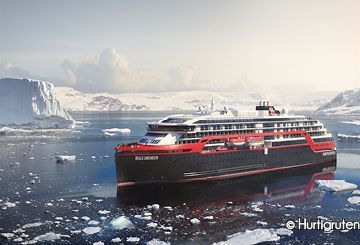
However, other cruise lines, such as Royal Caribbean and Hurtigruten , have looked at other alternatives. Royal Caribbean are planning to debut the use of fuel cell technology for their newest class of ship (the Icon class). Fuel cell technology, alongside LNG fuel, promises to ‘a new era of shipbuilding that will dramatically reduce greenhouse gas emissions.’ Royal Caribbean’s latest ships have already had some success in reducing carbon emissions, emitting about 20% less carbon dioxide than ships that came out just a few years ago.
Recently, Hurtigruten launched their newest expedition ship, the Roald Amundsen, which is notable as the first ship with hybrid capabilities , helping it to reduce its emissions by as much as 20%. Hurtigruten have developed this innovative hybrid technology along with Rolls Royce and the non-profit organisation, Bellona, which works to meet and fight climate challenges. As a hybrid capable ship, Roald Amundsen is just one of Hurtigruten’s steps to ensuring that ‘the future of shipping is, without a doubt, silent and emission free,’ and the line has ambitions to be the world’s ‘first cruise company to power ships with fossil-free fuel’. The next step towards that aim is the introduction of ships powered with Liquefied Biogas (LBG), a renewable and fossil-free gas produced from dead fish and organic waste!
It is apparent that the cruise industry (which, in itself only represents 1% of the global shipping industry) is striving to ensure sustainability and investing heavily in protecting the environment.
Advances in technology – as well as rules and regulations – have also ensured that the ships that sail today are the safest to ever sail the seas . Although there have been some recent news reports that have perhaps caused alarm that cruising isn’t safe, one of the reasons why such stories make headlines is because of their rarity . With a 38% reduction in operational incidents since 2009, cruising is the safest form of leisure travel. Occasionally, news outlets will report of people ‘falling off’ a ship. However, due to the rules and regulations in place governing safety on board, including those relating to the height and placement of barriers and balconies, it is nigh on impossible to simply ‘fall off’ a ship. It would be more accurate to state that someone has jumped off a ship, possibly suicidal, or (the other most common cause) were mucking around, usually inebriated.
SORTING CRUISING FACT FROM FICTION
The reality of cruising is very different from what cruising myths would have you believe! Nowadays, all manner of people – of all ages and from all backgrounds – enjoy cruising, and it is not simply the preserve of an exclusive elite. Cruising has changed demonstrably since my first cruise, and continues to do so; this is an ever-adapting industry, which always has its guests’ desires and comforts at its heart. Therefore, cruising increasingly offers more and more, whether it’s onboard entertainment, activities and amenities to ensure that guests are happy, relaxed, entertained, and enriched, or more freedom and flexibility in terms of onboard dining and ambience, so guests can choose whether they would prefer a more informal, relaxed cruise, or something more traditional. Advances in technology not only ensure that cruising is more comfortable and safer than ever before (and therefore ensuring that sailing is smoother and more stable, and less likely to cause seasickness), but also ensures sustainability and mitigates cruise lines’ impact on the environments through which they cruise.
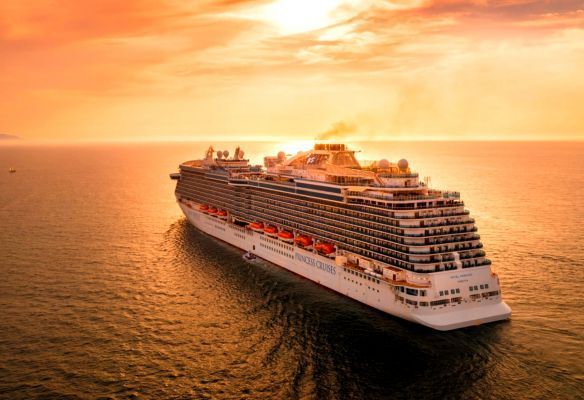
The cruise industry prides itself on its diversity, with each cruise line offering something unique, and ships coming in different shapes and sizes, with an almost dazzling array of amenities on offer. Furthermore, with nine out of ten first-time cruisers booking a subsequent cruise within 12 months, it’s obvious that once you take the plunge and cruise, you convert! For twenty years, we’ve certainly seen hundreds (if not thousands) of first-time cruisers become addicted! It is fair to say (as the cruise industry itself has long claimed) that ‘ there is a cruise ship out there for everyone!’ , and with cruise specialists such as our team, we pride ourselves on our ability to find the right cruise for all our clients! Data taken from the CLIA 2018 report.
RELATED CRUISE ARTICLES
If you would like to find out more about cruising, contact our cruise specialists today!
About the author:

Amy joined our marketing team in 2015, although she first ‘worked’ for Cruise Select as a teenager, stuffing brochures into envelopes! Amy has been cruising for 20 years, and over that time has experienced around 60 ships from almost 40 cruise lines, including Fred. Olsen Cruise Lines, Hebridean Island Cruises, Hurtigruten, Azamara, Silversea and many, many more! In 2018, she became Bedfordshire’s only accredited CLIA Cruise Master, an accolade recognised by City & Guilds, and this year she made Finalist for Travel Agent Marketing Star at the Cruise Star Awards (as well as Travel Agent Rising Star, for under 35s). Amy has also written for Cruise Adviser, as well as giving presentations on cruising at our annual Cruise Shows.


